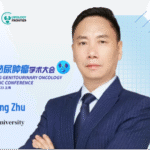
Editor’s Note: On August 22–23, 2025, the 13th Lu Daopei Hematology Conference was successfully held in Beijing, jointly organized by the Beijing Health Promotion Association and the Guangzhou Kapok Oncology & Rare Disease Foundation, and hosted by the Beijing Lu Daopei Hematology Institute. This high-level event gathered world-leading hematology experts to discuss hematopoietic stem cell transplantation, cellular therapy, and precision diagnosis and treatment of hematologic malignancies. During the meeting, Professor Yue Lu from the Lu Daopei Medical Group presented a keynote lecture on “Second Allogeneic Hematopoietic Stem Cell Transplantation (allo-HSCT2) for Post-Transplant Relapse in Acute Leukemia.” Below is a summary of his key insights, offering practical guidance for optimizing second transplant strategies.
Advances in Salvage Therapy for Post-Transplant Relapse
Compared with 5–10 years ago, there are now far more options for treating post-transplant relapse beyond conventional chemotherapy. In acute myeloid leukemia (AML), targeted agents such as BCL-2 inhibitors, hypomethylating agents, and CAR-T immunotherapy have expanded the treatment landscape. Particularly in acute lymphoblastic leukemia (ALL), where historically post-transplant relapse was treated only with chemotherapy—yielding low remission rates and short durations—immunotherapy has dramatically improved both response rates and durability, giving patients a renewed chance at curative therapy
.For patients who achieve remission after relapse, cellular immunotherapy remains crucial to sustain long-term remission. Current approaches include donor lymphocyte infusion (DLI) or a second transplant, though no consensus has been reached on which is superior. Importantly, in cases of HLA-loss relapse, DLI is ineffective and allo-HSCT2 is the only viable option.
New Insights into allo-HSCT2 for Acute Leukemia
Large-scale data on allo-HSCT2 primarily comes from the European Society for Blood and Marrow Transplantation (EBMT). Before 2000, the 5–10-year leukemia-free survival rate after allo-HSCT2 for AML or ALL was below 10%, with relapse rates as high as 60%, largely because most patients could not achieve remission before the second transplant.The 2024 EBMT report of 1,541 AML cases showed significant survival improvement over time: compared with 2000–2004, relapse rates dropped from 64% to 50.7% in 2015–2019, overall survival (OS) improved from 22.5% to 35%, leukemia-free survival (LFS) rose from 14.5% to 24.5%, and GVHD-free, relapse-free survival (GRFS) increased from 10.5% to 17%, all without a notable rise in non-relapse mortality (NRM) or GVHD. These findings strengthen the case for allo-HSCT2 as a viable salvage option.
Patient Selection and Donor Choice
A 2024 EBMT analysis of 3,356 allo-HSCT2 cases identified several risk factors for NRM, including older age, poor performance status, high disease risk index (DRI), early relapse after first allo-HSCT, unrelated or haploidentical donors, and prior GVHD. Prior GVHD was also a key risk factor for developing GVHD after the second transplant. The single strongest predictor of relapse was a high DRI. Thus, patient selection should comprehensively evaluate disease status, risk of NRM, and GVHD history to identify those most likely to benefit from allo-HSCT2.There is still no international consensus on whether the donor should be changed for allo-HSCT2. However, in HLA-loss relapse, the donor must be switched to one with a new mismatched haplotype to avoid graft failure.
Lu Daopei Hospital’s Clinical Experience
Lu Daopei Hospital recently reported long-term outcomes for 414 allo-HSCT2 cases (2012–2024):• 5-year OS: 40.9%• 5-year LFS: 39.2%• CIR: 29.3%• NRM: 41.7%These results exceed EBMT benchmarks. ALL patients achieved superior 5-year LFS (46.7%) compared with AML (30.3%) and MPAL (12.5%), largely because a higher proportion were in CR and MRD-negative before allo-HSCT2—thanks to CAR-T therapy in most cases.
Among 206 ALL patients, those who received CAR-T before allo-HSCT2 had lower relapse rates (19.1% vs. 34.4%) but higher NRM (45.7% vs. 37.0%). Although LFS showed an upward trend (45.6% vs. 36.6%), the difference was not statistically significant, indicating that while CAR-T improves access to allo-HSCT2, strategies to reduce NRM are still needed.Notably, among haploidentical transplants, patients who switched to a new mismatched haplotype donor for allo-HSCT2 had significantly lower relapse rates (20.5% vs. 70.6%) and higher LFS (38.6% vs. 11.4%), suggesting that changing donors is beneficial even when HLA-loss status is uncertain.
Conclusion
Allo-HSCT2 remains an effective salvage option for post-transplant relapse.
• HLA-loss relapse: Proceed quickly to allo-HSCT2 with a new mismatched haplotype donor.
• Classic relapse: Consider GVHD history, NRM risk, and disease status before proceeding
• Bridge therapy: Use targeted and immune-based approaches to achieve CR before allo-HSCT2.• Donor selection: When possible, choose a donor with a new mismatched haplotype to maximize benefit and avoid ineffective transplants.


